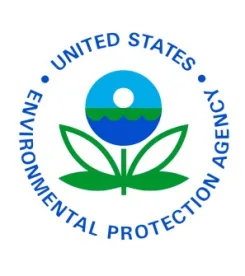The August 14, 2018 deadline for reporting under US EPA’s nanomaterials reporting rule is rapidly approaching.
US EPA promulgated the rule in January 2017 under Section 8(a) of the Toxic Substances Control Act (TSCA). 82 Fed. Reg. 3641 (Jan. 12, 2017). The rule requires any person that manufactured, imported or processed a covered nanomaterial substance during the three years prior to the rule’s effective date to report certain information to US EPA within one year of the effective date.
Although the rule initially was to be effective in May 2017, US EPA extended the effective date until August 14, 2017, making the reporting deadline August 14, 2018. 82 Fed. Reg. 22088 (May 12, 2017). The extension also adjusted the beginning and end dates of the three-year period for which reporting is required.
The rule does not contain a formal definition of nanomaterials. Instead, the rule requires reporting of chemical substances that are solids at 25° Celsius and standard atmospheric pressure; that are manufactured or processed in a form where any particles (including aggregates and agglomerates) are in the size range of 1–100 nanometers (nm) in at least one dimension; and that are manufactured or processed to exhibit one or more “unique and novel properties.” Additionally, the rule exempts small businesses with sales of less than $11 million per year from the reporting requirement.
“Unique and novel properties” are defined in the rule to mean “any size-dependent properties that vary from those associated with other forms or sizes of the same chemical substance, and such properties are a reason that the chemical substance is manufactured or processed in that form or size.” In the preamble to the rule, US EPA explained that a substance is not reportable simply because it contains particles in the size range of 1–100 nm. Instead, the substance “must also demonstrate a size-dependent property different from properties at sizes greater than 100 nm and is a reason the chemical is manufactured or processed in that form or size.” The rule also contains exemptions for certain substances, including substances manufactured, imported or processed for R&D purposes, as well as substances that contain less than 1% by weight of any particles, including aggregates and agglomerates, in the size range of 1–100 nm.
Persons who manufactured, imported or processed nanomaterial substances covered by the rule during the three-year period prior to August 14, 2017 must report the following information to US EPA by August 14, 2018 for each such substance:
(1) the common or trade name, the specific chemical identity including the correct Chemical Abstracts (CA) Index Name and available Chemical Abstracts Service (CAS) Registry Number, and the molecular structure of each chemical substance or mixture.
(2) material characteristics including particle size, morphology, and surface modifications.
(3) physical/chemical properties.
(4) the maximum weight percentage of impurities and byproducts resulting from the manufacture, processing, use, or disposal of each chemical substance.
(5) the annual production volume for the previous three years before August 14, 2017 and an estimate of the maximum production volume for any consecutive 12-month period during the next two years of production after August 14, 2017.
(6) use information describing the category of each use by function and application, estimates of the amount manufactured or processed for each category of use, and estimates of the percentage in the formulation for each use.
(7) detailed information on methods of manufacturing or processing.
(8) exposure information with estimates of the number of individuals exposed in their places of employment, descriptions and duration of the occupational tasks that cause such exposure, descriptions and estimates of any general population or consumer exposures.
(9) release information with estimates of the amounts released, descriptions and duration of the activities that cause such releases, and whether releases are directly to the environment or to control technology.
(10) risk management practices describing protective equipment for individuals, engineering controls, control technologies used, any hazard warning statement, label, safety data sheet, customer training, or other information that is provided to any person who is reasonably likely to be exposed to the substance regarding protective equipment or practices for the safe handing, transport, use, or disposal of the substance.
(11) existing information concerning the environmental and health effects.
The rule also imposes a “standing one-time reporting requirement” for persons “who intend to manufacture or process a discrete form of a reportable chemical substance” on or after August 14, 2017. Any such person must report the same information above to US EPA, except that for production volume, the party must report the estimated maximum 12 month production volume and the estimated maximum 12-month production volume for any consecutive 12-month period during the first three years of production. In general, any such person must report the information to US EPA at least 135 days before manufacturing, importing or processing of the substance. The rule provides, however, that where the person has not formed an intent to manufacture, import or process a discrete form of a reportable chemical substance 135 days before such manufacturing, importing or processing, the information must be provided to US EPA within 30 days of forming the intent. The party cannot manufacture, import or process the substance until it provides the information to US EPA, but it can begin manufacturing, importing or processing the substance at any time thereafter.




 />i
/>i


